- Entertainment

Terrifying true story behind Josh Duhamel’s new Shark Week movie
A-lister Josh Duhamel’s latest movie is a terrifying stranded-at-sea-surrounded-by-sharks story, but what makes it scarier is it actually happened.

Sydney Sweeney shoots down Depp rumour

Seinfeld calls out A-list actor: ‘Pain in the a**’

Leaked footage escalates Rebel’s celeb feud
A luxury yacht and a six-day voyage on the high seas turns into a bloody nightmare for this group in a true story that plays out in Josh Duhamel’s latest Hollywood movie.
Capsized: Blood in the Water is now available to stream on Foxtel Now and is the first scripted feature film made just for Shark Week. It’s about five people who are stranded at sea surrounded by dozens of sharks for days. Only two live to tell the tale.
What makes the movie even more terrifying is that it’s based on a true story.
In 1982, a group set out from Maine in perfect sailing conditions en route to Florida. But two days into the journey, their 18-metre yacht Trashman capsized during a violent storm, throwing 24-year-old sailor Deborah Scaling-Kiley and her friends into the ocean.

One of her crewmates, Meg Mooney, slashed her leg in the struggle – making them a magnet for great white sharks who began circling the group.
They managed to clamber onto a life raft, but within hours “hundreds” of killer sharks began circling and even ramming the boat in an attempt to dislodge the terrified crew members.
CALM BEFORE THE STORM
The crew, which included Deborah, Meg, Captain John Lippoth (Duhamel), yachtsman Brad and Englishman Mark Adams, were to sail up the East Coast of America and drop the yacht off to its new owner in Florida.
Deborah was looking forward to the six-day, 2100km trip.
“The weather was beautiful, the boat was fun to steer,” she said to The Sun . “It doesn’t get much better than that.”
But on the second day, the weather took a turn for the worse, and as night fell, the yacht hit a terrifying tropical storm.
As nine-metre waves crashed against the mast and 110km/h winds battered the sails, the captain, who had been drinking heavily, fell asleep at the helm.
Deborah was woken in the middle of the night by panicked voices and found icy water pouring into the cabin.
The boat was capsizing and Meg fell against some rigging, badly cutting her leg.
The panicked crew jumped into the water, and Mark inflated a 3.4 metre dinghy.
The crew clambered in, but before he could join them, Mark felt something nudge his leg.
At that moment, to Deborah’s horror, she saw hundreds of sharks in the water around them, swimming dangerously close to their boat.
“The minute we got in there were fins surrounding the dinghy,” she said. “They were everywhere.”
The killer creatures had been drawn to the blood from Meg’s open wound and had come from miles.
One of the sharks grabbed the rope on the front of the boat and started pulling it along in the water – taking the crew on a terrifying joy ride.
When that failed the sharks began to ram the tiny boat in a bid to topple them out.
Dive into Shark Week on Discovery Channel. Stream Foxtel Now
ONLY THE BEGINNING
Hours turned into days and the starving crew became severely dehydrated.
With urine and the blood and pus from Meg’s wounds sloshing about on the floor of the dinghy, the crew started developing infections all over their bodies.
Taking a turn for the worse, Meg’s wounded leg became infected and blood poisoning began spreading through her body.
By day three, with infection and dehydration rife, the crew began to get delirious as their brains were starved of water.
Desperate, John and Mark started to drink salt water – which accelerates dehydration and causes kidneys to shut down.
Before long John was hallucinating. He suddenly thought he saw land and jumped off the side of the boat.
“All of a sudden we just hear this shrill scream. Blood-curdling. Then it was over, silence. There was no crying, nothing. There was no doubt what got him. The sharks got him,” Deborah recalled.
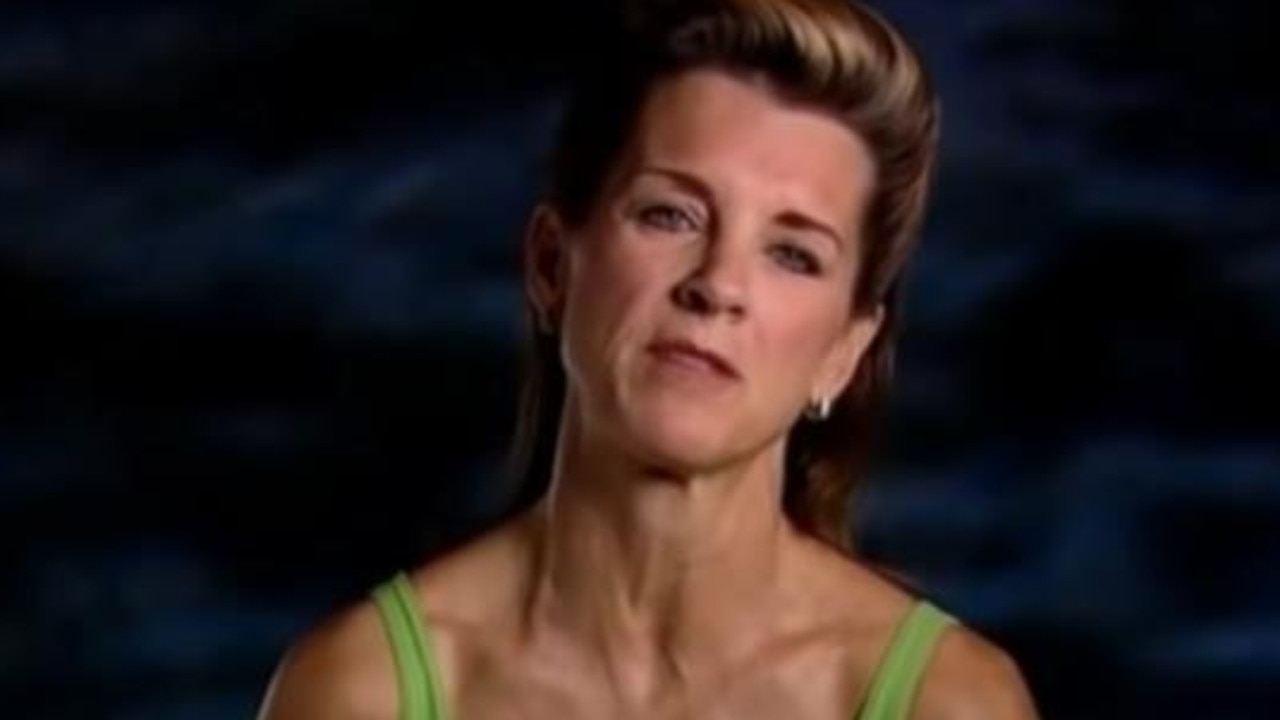
With Mark also delusional and Meg weak from her blood poisoning, Brad and Deborah were the only ones left with their wits about them and made a pledge to look out for each other.
Shortly after John’s death, Mark – who had been hallucinating for hours – mumbled that he was going to the convenience store to buy beer and cigarettes.
Despite Deborah and Brad’s attempts to bring him back to reality, he too plunged into the shark-infested waters.
The sharks instantly moved in, banging against the bottom of the boat and spinning it round as they tore into Mark’s flailing body in a frenzied attack.
“It was by far the most horrifying moment of my entire life,” Deborah said.
DYING A SLOW DEATH
That night, as the infection in her blood took hold, Meg began having severe hallucinations.
“We were sitting there watching Meg die and it was tragic,” Deborah said.
When the remaining pair woke in the morning, she was dead – lying in the “fetid mess of seaweed, blood, urine and pus” on the floor.
Brad admits he considered eating her body in a desperate bid for survival, but Deborah warned him Meg was too infected and insisted they had to throw her off the boat.
They took off her shirt and jewellery to give to her family on their return.
“It was such a sad moment because we laid her naked body on the side of the raft and then we decided we couldn’t just roll her off. She needed some sort of funeral,” Deborah said.
“So we said the Lord’s Prayer and Psalm 23 and we gently pushed her body overboard.
“Then we decided to go back to sleep so when the sharks attacked we wouldn’t have to see it.”
In another terrifying moment, Brad fell into the water while trying to clean the boat out, and Deborah broke down as he struggled to find the strength to get him back in.
“I felt like I’d just doomed Brad to death,” she said. “If the sharks came back, he was dead.”
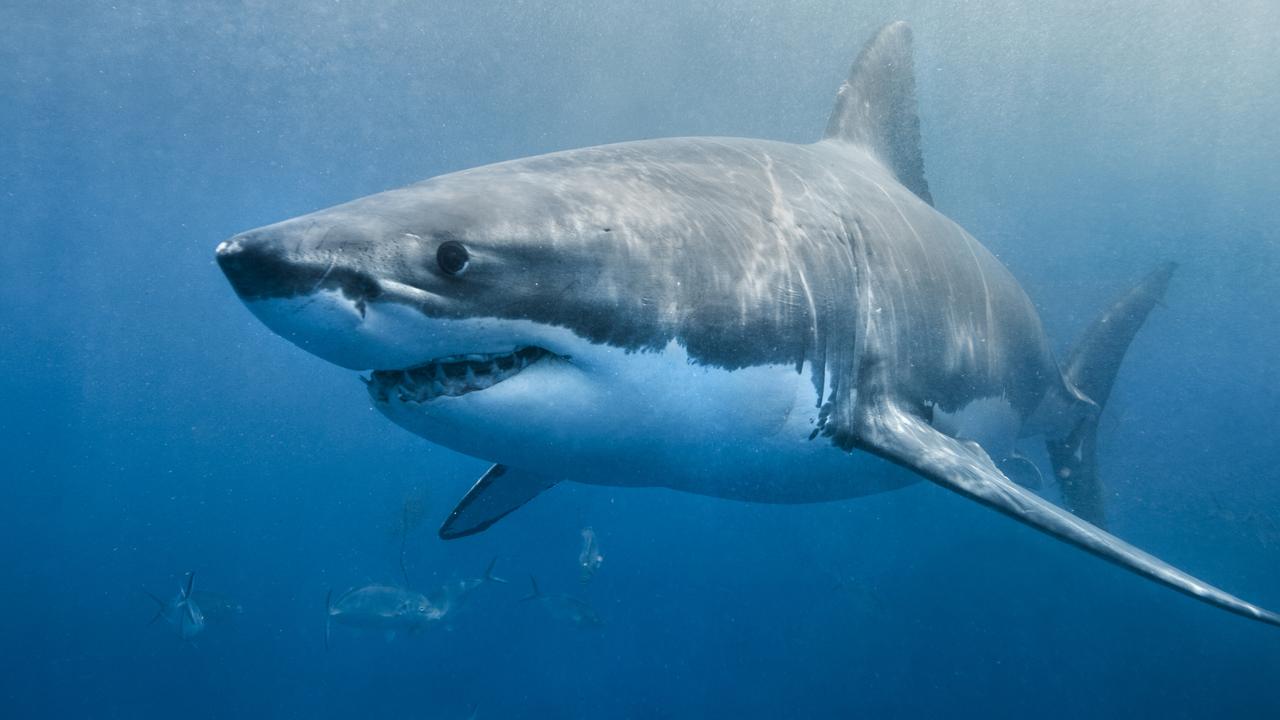
THEIR MIRACLE RESCUE
With a surge of adrenaline Brad managed to pull himself in, and moments later desperation turned to joy as he spotted a Russian cargo ship on the horizon.
The pair waved frantically at the crew – who waved back – and soon they had thrown a life ring into the water centimetres from the boat.
The pair jumped into the water and were winched on-board the ship.
“I didn’t care who these people were or where we were going,” Deborah said. “I was there and Brad was there and we were alive.”
Deborah went on to become a motivational speaker and wrote a book – Albatross: The True Story of a Woman’s Survival at Sea – in 1994.
She sadly died in 2012 at her home in Mexico, at the age of 54, from unknown causes.
Brad continues to work as a mariner in Massachusetts but says the 1982 ordeal has left him a changed man.
“It’s not something that you turn off once you’ve been through it,” he said. “You keep living in survival mode. I don’t know if you’re shell-shocked, but it’s impossible to just turn it off and live the way you did before.”
Capsized: Blood in the Water is now streaming on Foxtel Now
This article originally appeared on The Sun and was reproduced with permission
Add your comment to this story
To join the conversation, please log in. Don't have an account? Register
Join the conversation, you are commenting as Logout
Sydney Sweeney is hot property in Hollywood right now - so she’s stamping out one rumour about her before it gets out of hand.
Jerry Seinfeld’s latest co-star is one of Hollywood’s best known actors – and he reveals they had “a lot of fights” on set.
After simmering for eight years, this celeb feud has exploded in the past week - and a footage leak just made things a whole lot worse.
Screen Rant
Capsized: blood in the water true story - what the shark week movie changed.
Capsized: Blood in the Water, Shark Week's first original movie, is based on a true story. So how much of the event was changed for Discovery?
Discovery's Capsized: Blood in the Water is based on the harrowing true story of a sailing crew stuck adrift for days in shark-infested waters. The full-length film marks Shark Week 's first-ever original movie, although some details were changed compared to the disastrous event.
Sharing the story of the 1982 fateful trip, Capsized: Blood in the Water showcases how much a person can endure when survival instincts kick in. The film also explores how hope could make all the difference in life and death situations. Furthermore, it examines the warning signs that some of the crew should have pointed out which could have prevented the deadly trip.
Related: Jaws: Where Amity Island Is Supposed To Be (& Where It Was Filmed)
Capsized: Blood in the Water ends with only two survivors who witnessed more terror than anyone could ever imagine. Capsized: Blood in the Water informs viewers about what happened to the survivors after they were rescued by a Soviet cargo ship. But along the way, some changes were made to quicken the story and dramatize it for television.
Capsized: Blood in the Water True Story Differences
Perhaps the most notable changes in Capsized: Blood in the Water 's true story is the dynamic and demeanor of the crew. John Lippoth (Josh Duhamel) serves as the yacht's captain and the movie portrays him as a skilled boater who keeps his crew in line. In reality, John was lazy, inexperienced, and spent most of his time drinking with crewman Mark (Joshua Close) below deck. Even though the new guy, Brad (Tyler Blackburn), is shown as being a novice to the boating world, the real Brad Cavanagh was highly adept in the sea, as was Deborah Scaling-Kiley (Beau Garrett).
The capsize of the boat is also hurried in the film compared to the actual event. The movie begins with the yacht, Trashman, leaving Annapolis, Maryland, as it sets sail for Florida. The true journey began in Portland, Maine, before it made a stop in Annapolis. On the way to Florida, the Trashman hit rough seas during a long storm. The crew took turns taking the watch and steering the ship which lasted for the better part of a day. John and Mark had been drinking and they fell asleep when they were supposed to be on duty. The yacht had taken too much damage, causing it to sink. In the movie, a storm quickly approaches and capsizes the boat almost immediately.
John's girlfriend Meg Mooney (Rebekah Graf) was injured by some of the boat's rigging when the group tried to make it to the inflated lifeboat. They were forced to take refuge under the lifeboat for 18 hours before the wind died down and they were able to flip it and get inside. Meg injures her leg before they are forced out of the boat in the movie. She later dies from her injuries in the same fashion as Meg did in 1982. Both John and Mark fall victim in a similar fashion as they did during the real event. They hallucinate and fall in the water before they are attacked, and ultimately killed, by sharks. Mark's hallucinations stemmed from drinking saltwater which is what made both men lose their minds in the true tale.
Related: Why The Mist's Movie Ending Is Still One Of The Most Shocking Ever
What Happened After Capsized: Blood in the Water's Ending?
Capsized: Blood in the Water 's ending provides a follow-up on the lives of Brad and Deborah following their rescue. After five days without food and water, the sole survivors were picked up by the Russians on October 28, 1982. The pair then spent eight days in the hospital as they were treated for severe dehydration and starvation.
Deborah went on to have a successful speaking career and wrote three books about her survival. It was revealed that she died in 2012. Brad suffered from the trauma for years but he later overcame the terrifying memories. He eventually became a boat captain and often travels along the same route where the group capsized. Capsized: Blood in the Water 's ending text appropriately honors the three crew members that were lost on the journey.
Next: The Red Sea Diving Resort True Story: What The Netflix Movie Changed
- Top Rated Books
- Top Club Picks This Week
- BOOK CLUB INSIDER
- New Releases
- Now in Paperback
- Reese Witherspoon Book Club
- Oprah's Book Club
- Read with Jenna
- Amazon Best Books
- People Picks
- Entertainment Weekly Picks
- Vogue Recommends
- Skimm Reads
- From Page to Screen
Member Login
Forgot your login/password?
BKMT READING GUIDES

Albatross: The True Story of a Woman's Survival at Sea by Deborah Scaling Kiley

Introduction
One late summer's day, the yacht Trashman set sail from Annapolis to Florida. On board were five young people: John, the captain; Meg, Mark, Brad, and Debbie Scaling. When the boat sailed into a gale, the eighty-knot winds shredded the sails. Forty-foot seas crashed through the cabin windows, and Trashman sank, leaving the crew adrift in a rubber dinghy. Albatross tells the story of how Debbie and Brad survived and how the tragedy changed Debbie Scaling's life forever.
Editorial Review
Discussion questions, notes from the author to the bookclub, book club recommendations.
Recommended to book clubs by 0 of 0 members.
Member Reviews
made for great discussion.
Now serving over 80,000 book clubs & ready to welcome yours. Join us and get the Top Book Club Picks of 2022 (so far).

Get Top Club Picks Delivered Weekly

- Contact Info
- For Authors & Publishers
- Privacy Notice
- Randy Susan Meyers
- Anna Quindlen
- AUTHORS & PUBLISHERS
- Feature your book on BookMovement!

© 2003 - 2017 BookMovement, LLC. All rights reserved.
Josh Duhamel & the ‘Capsized: Blood in the Water’ Cast on Shark Week’s First Movie
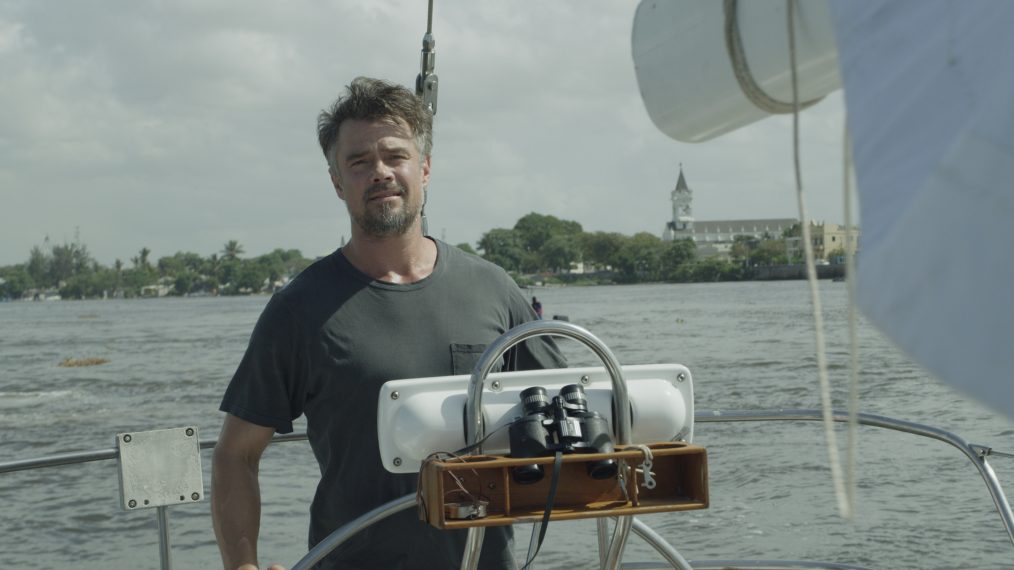
For a guy who knows he’s about to get attacked by a shark, Josh Duhamel couldn’t be in better spirits. “I’m going in the pool!” the swim trunk–clad actor announces to no one in particular this May morning in the Dominican Republic. That “pool” is actually a 2.7 million-gallon water tank at the island’s Pinewood Studios, where he’s filming the Discovery movie Capsized: Blood in the Water .
For hours under the scorching sun, crew members mill about on metal catwalks constructed over the expansive tank while, down below in chest-high water, Duhamel gamely rehearses and then shoots his close encounter. (For the record, there’s no actual shark — it will be added in later digitally.) He screams. He splashes. He flails. And he kids around too. After one take, Duhamel cries out, “It got my wiener!”
Jokes aside, Capsized is serious business for Discovery. For the first time ever, the network is diving into a new genre for Shark Week: scripted film. (Those fake megalodon documentaries don’t count.) Since its debut in 1988, the popular annual event, which last year drew 34.9 million viewers, has largely relied on reality specials and informational programming to entertain and educate viewers about the ocean dwellers.
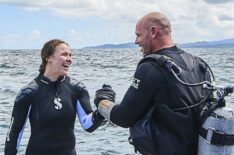
Paul de Gelder on His Shark Week Adventure With Ronda Rousey
But following the summer staple’s 30th anniversary, “there was a lot of discussion around, ‘How do we build on this success?'” says Howard Swartz, Discovery’s senior vice president of production and development. “So we decided to try something out of the box.”
Capsized , based on actual events, recounts the ordeal of captain John Lippoth (Duhamel), his girlfriend, Meg Mooney (Rebekah Graf), and three other young sailors — tough Deborah Scaling (Beau Garrett), hard-drinking Mark Adams (Josh Close) and good-natured Brad Cavanaugh ( Tyler Blackburn ). In 1982, a billionaire hired the group to sail his 58-foot yacht Trashman down the East Coast to Fort Lauderdale, Florida. Somewhere near North Carolina, a raging storm destroyed the vessel, leaving the quintet clinging to life in an 11-foot dinghy.
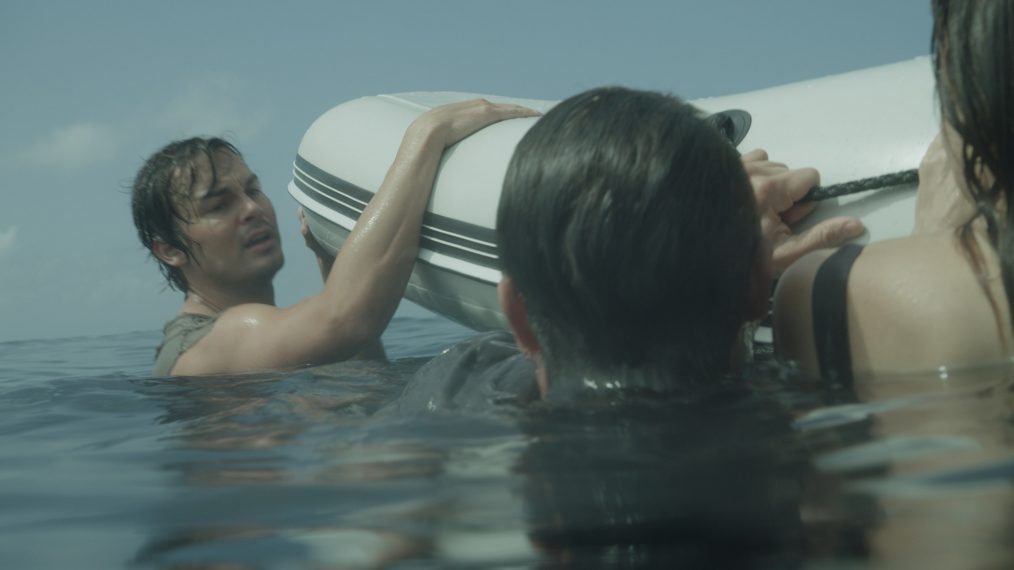
Capsized: Blood in the Water
“They were lost at sea with no food, no water, in the blazing sun and then freezing at night,” a tired and sore Duhamel explains during a much-needed break. For five excruciating days, until a Russian freighter came across the survivors, “they were barely hanging on,” Duhamel continues.
Oh, and sharks were circling them too. But unlike popcorn movies such as Jaws and The Meg , Capsized doesn’t “demonize” the creatures, insists Swartz: “One thing we’ve done really well over 30 years is celebrate sharks and try to get away from the perception of them as these mindless killing machines.” Duhamel agrees. “Sharks are just doing their thing,” he says. “It’s not personal. It’s like, ‘You’re there. I’m going to eat you.'”
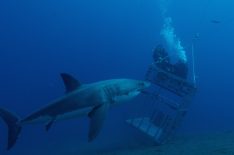
All the Shark Week 2018 Celebrity Appearances, Ranked
And they did. Like Lippoth, Adams also tangled with one of the predators — and the film’s violent dramatization freaked out the actor playing him. “That was scary, man,” recalls Close, admitting the shoot has been draining. “They had a fake shark on my leg, and if you look down, it looks real. It’s got its eyes shut and it’s chomping into your leg. I’m holding my breath, then screaming.”
Thank the stunt crew for that authenticity. In scuba gear beneath the surface, they would attach ropes to the actors and jerk them every which way, catching them off guard. “I tell the actor, ‘OK, I’m going to pull you when you’re there,’ but then I pull a little bit earlier,” reveals stunt coordinator Dickey Beer — who’s worked with everyone from Harrison Ford to Angelina Jolie — with a smile. “You must have that surprised look on somebody’s face.”
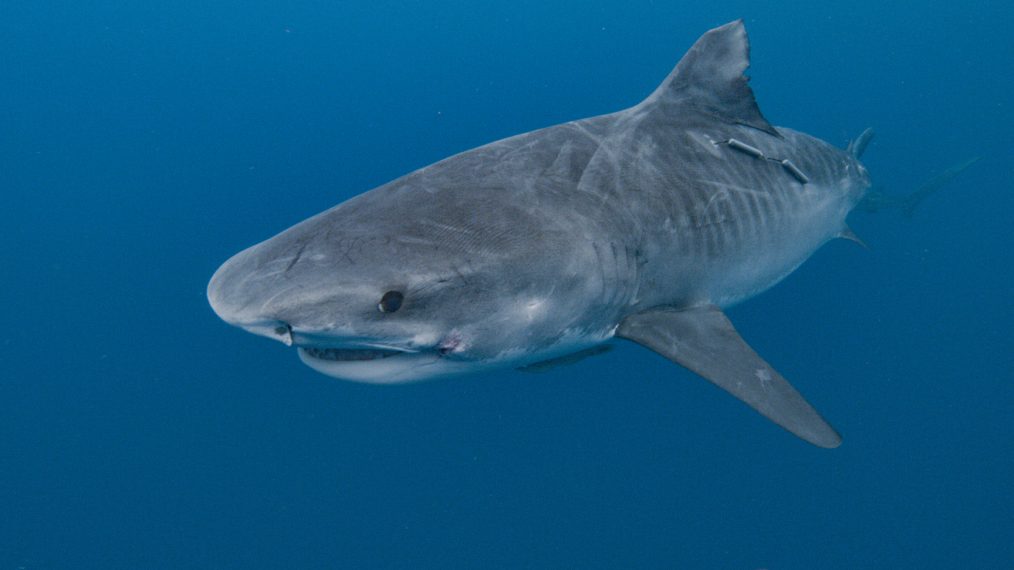
Underwater. Double tagged tiger shark swimming toward camera
In fact, the whole production looks convincing, from the attack scenes to the ominous image of shark fins slicing swiftly through the surface of the water. (Beer’s stuntwoman daughter Amy wore model fins to double as a predator.) Even costars who didn’t swim with the fishes got chills. “I feel like I’m able to separate reality from fantasy,” says Blackburn. “But there are moments when you’re like, ‘Oh s–t!'”
Discovery is banking on viewers having that same breathless, edge-of-your-seat reaction to Capsized . “It has so many elements that resonate with our audience,” says Swartz. “It’s a true story of survival in shark-infested waters.”
Capsized: Blood in the Water , Movie Premiere, Wednesday, July 31, 9/8c, Discovery
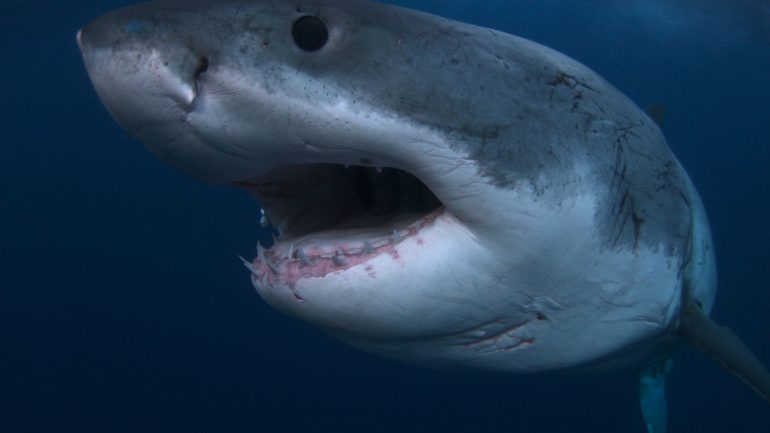
Shark Week where to stream
Josh Duhamel
Tyler blackburn.

For the first time, Shark Week includes a feature movie, based on a 1982 shark attack
The film stars Josh Duhamel, Tyler Blackburn, and Beau Garrett, and will be released on July 31
You can save this article by registering for free here . Or sign-in if you have an account.
Reviews and recommendations are unbiased and products are independently selected. Postmedia may earn an affiliate commission from purchases made through links on this page.
Article content
Shark Week has begun and this year, Discovery Channel is changing things up for their 31 st instalment by including a new feature film ‘Capsized: Blood in the Water’ based on a 1982 true story.
The yacht called the ‘Trashman’ was headed to Fort Lauderdale, Fla. from Portland, Maine to reunite with its owner, according to the United Press International that reported the incident in 1982.
For the first time, Shark Week includes a feature movie, based on a 1982 shark attack Back to video
Enjoy the latest local, national and international news.
- Exclusive articles by Conrad Black, Barbara Kay, Rex Murphy and others. Plus, special edition NP Platformed and First Reading newsletters and virtual events.
- Unlimited online access to National Post and 15 news sites with one account.
- National Post ePaper, an electronic replica of the print edition to view on any device, share and comment on.
- Daily puzzles including the New York Times Crossword.
- Support local journalism.
Create an account or sign in to continue with your reading experience.
- Access articles from across Canada with one account.
- Share your thoughts and join the conversation in the comments.
- Enjoy additional articles per month.
- Get email updates from your favourite authors.
Don't have an account? Create Account
During its journey, the yacht was capsized in a storm and sunk in the Atlantic, just off the coast of North Carolina, close to Morehead City— an area known for having sharks. The crew managed to get in a lifeboat and were soon surrounded by tiger sharks that followed them when one of the crew members became injured in the storm and started bleeding.
After being stranded on the raft for 18 hours, two of the crew members Deborah Scaling Kiley and Brad Cavanagh, the only survivors, were rescued by a Soviet cargo freighter. Two of the crew members had gone overboard deliriously, while the third succumbed to her injuries.
Scaling remembers realizing how the captain was afraid of the ocean during the trip, after he frequently made excuses to go below deck. Scaling and Cavanagh were the only capable sailors on board, according to Popular Mechanics , a popular science and technology magazine.
The two could do little once the storm hit them. Food, water, and supplies were lost.
The trailer, released on the Shark Week twitter account, shows the intensity of the situation as the stranded crew tries to survive while being hunted by sharks.
The film stars Josh Duhamel, Tyler Blackburn, and Beau Garrett. It will be released on July 31 as part of the Shark Week programming.
#Capsized : Blood in the Water is based on terrifying real-life events. Don’t miss #SharkWeek ’s first-ever feature film starring @joshduhamel and @tylerjblackburn , Wednesday July 31 at 9p on @Discovery and Discovery GO. pic.twitter.com/0wikCNGBxe — Shark Week (@SharkWeek) July 23, 2019
Since its first instalment in 1988, Discovery Channel has been known for airing shark programming in an attempt to conserve the species.
The film, however, is slightly different from Shark Week’s usual fare.
Shark expert Stephen Kaijura, from Florida Atlantic University, believes that films like this focuses on the “sensational aspects” instead of the science, according to NBC news .
“Here you have a really diverse group of animals — they are a fascinating group because of their diversity and evolutional history,” Kaijura says. “But so much of that is ignored with shows called ‘Blood in the Water’ or ‘Danger Beach.’ You’re missing out on an incredible opportunity here.”
Meanwhile, Twitter user @Kirtie_ie notes the difference in programming, tweeting, “Serious question here, # SharkWeek for the years I watched it has promoted education and tried to dispel the # jaws legacy. Seems like you’re going backwards with your programming?”
Another Twitter user, @FreudParallel, says that the film is not a fictional Hollywood movie since it is based on real events.
“It’s good for people not to fear a 30 foot man hunting great white while they’re at the beach, but it’s also important for people to remain sensitive to the fact that sharks are dangerous.”
Postmedia is committed to maintaining a lively but civil forum for discussion. Please keep comments relevant and respectful. Comments may take up to an hour to appear on the site. You will receive an email if there is a reply to your comment, an update to a thread you follow or if a user you follow comments. Visit our Community Guidelines for more information.
Veterans Affairs Canada trolled for 'politically correct' Easter tweet: 'Happy March holiday season'

'Creepy' video of 15-year-old Bieber and Diddy resurfaces amid rapper's sexual assault lawsuit
Np view: if the goal is to make us poorer, trudeau's carbon tax is a stunning success.

Steven Guilbeault: Why I think the carbon tax is the right policy for Canada
Rahim mohamed: the alberta ndp might not legally exist, posing a problem for naheed nenshi, openai reveals voice engine, but won’t yet publicly release the risky ai voice-cloning technology.
SAN FRANCISCO — ChatGPT-maker OpenAI is getting into the voice assistant business and showing off new technology that can clone a person’s voice, but says it won’t yet release it publicly due to safety concerns.
The best online deals in the Canadian retail space right now
Parachute, Levi's and Biotherm, to name a few
Advertisement 2 Story continues below This advertisement has not loaded yet, but your article continues below.
Make a splash in these 5 stylish one-piece swimsuits
Whether you’re in search of sun for spring break or getting ready for the summer ahead, it’s time to start thinking swimwear.
Annie Selke X Kit Kemp: A colourful and textured home collection
Stunning and luxurious decorative pillows, rugs and bedding
Are greens powders really worth the hype? We asked a nutritionist
Registered Holistic Nutritionist Madelyne Beckles shares her advice on the best way to get your greens
This website uses cookies to personalize your content (including ads), and allows us to analyze our traffic. Read more about cookies here . By continuing to use our site, you agree to our Terms of Service and Privacy Policy .

You've reached the 20 article limit.
You can manage saved articles in your account.
and save up to 100 articles!
Looks like you've reached your saved article limit!
You can manage your saved articles in your account and clicking the X located at the bottom right of the article.
The Shark Week Flick 'Capsized: Blood in the Water' Is Based on Terrifying True Events
PUBLISHED Jul. 31 2019, 7:04 p.m. ET
UPDATED Jul. 31 2019, 7:04 p.m. ET
Well y'all, it's that time of year again: Shark Week. The 31st season of the annual program kicked off on Discovery Channel on Sunday at 8 p.m. ET. And while the live footage is usually what I anticipate most, one TV movie, Capsized: Blood in the Water, has caught my attention.
Most of the TV movies during Shark Week tend to be far-fetched, but this one seems particularly realistic. So in case you're wondering if Capsized: Blood in the Water is a true story, brace yourself — it's based on real-life events.
What is the true story behind Capsized: Blood in the Water?
Capsized: Blood in the Water happens to be Discovery's first full feature film to debut during the intriguing (yet completely terrifying) week-long program, according to NBC.
And despite the fact the movie screams Hollywood (I mean — really — it stars Josh Duhamel), the film was apparently based on some seriously wild real-life events.
The movie is based on a tragedy that occurred in 1982. According to National Post , it all started when a boat owner hired a crew to bring his yacht, 'Trashman' to his home in Fort Lauderdale, Fla. from Portland, Maine. However, it capsized during a storm and sunk off the coast of North Carolina by Morehead City.
The area is an infamous home to sharks, and though the crew crammed into a lifeboat, many were bleeding from injuries incurred from the storm. The lifeboat was soon surrounded by tiger sharks.
The crew was stranded for a total of 18 hours, according to Popular Mechanics , Two crew members, Captain John Lippoth and his friend, Mark Adams, had been consistently drunk during the excursion.
They drank seawater and soon became incoherent and went overboard. The captain's girlfriend ended up dying from blood poisoning, and had to be thrown overboard.
In the end, only two crew members, Deborah Scaling Kiley and Brad Cavanagh, survived. They were eventually rescued by a Soviet cargo freighter.
According to Popular Mechanics , Deborah and Brad were unable to do much after the storm. They lost most of their food, water, and supplies.
Plus, seeing as the captain was consistently drunk and apparently afraid of the ocean, he wasn't an incredibly helpful asset.
The Capsized: Blood in the Water trailer was officially released on Shark Week's Twitter account last week. It depicts the story of the stranded crew, and how they tried their best to survive in a lifeboat without supplies, while being hunted by tiger sharks.
Definitely watch it if you haven't already, below.
Like I said, the Shark Week feature film stars Josh Duhamel (so it's bound to be a beautiful time), as well as Tyler Blackburn, and Beau Garrett.
You will officially be able to watch it as of July 31 at 9 p.m. ET on the Discovery Channel. Oh, and don't worry — it's a no-life-jacket-required viewing party... just make sure you remember to keep all of your emotions in check. Sharks can smell fear, you know.
Melissa Márquez Is the Shark Week Expert We All Want to Be
Can Sharks Really Smell a Drop of Blood? Watch YouTuber Mark Rober Find Out!
The Internet Is Not So Sure About Celebrities Taking Over Shark Week 2019
Latest Entertainment News and Updates
- ABOUT Distractify
- Privacy Policy
- Terms of Use
- CONNECT with Distractify
- Link to Facebook
- Link to Instagram
- Contact us by Email

Opt-out of personalized ads
© Copyright 2024 Distractify. Distractify is a registered trademark. All Rights Reserved. People may receive compensation for some links to products and services on this website. Offers may be subject to change without notice.
Entertainment
Josh Duhamel's Terrifying Shark Week Movie Is Based On A Real Shark Attack
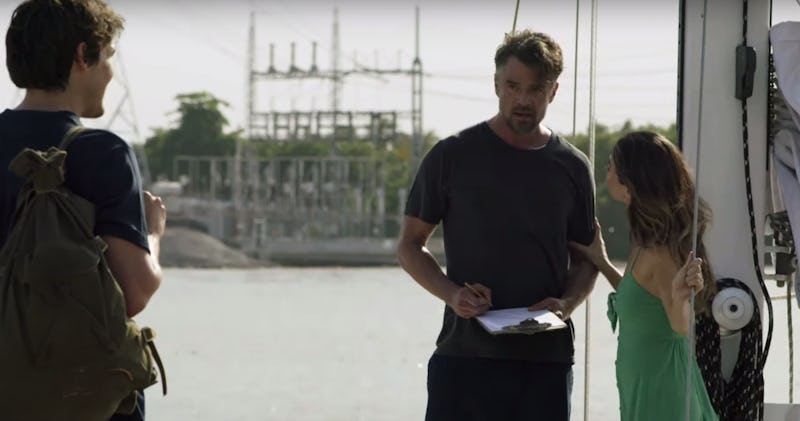
In recent years, Discovery Channel has prided itself on its true, educational content about sharks for Shark Week. But, this year, the network is mixing things up with its first scripted feature film. Don't worry, though, Capsized: Blood in the Water is based on a true story , according to a Discovery press release — so there's still an educational factor there. The press release says the movie depicts an October 1982 ship capsizing that left the crew trying to survive in the Atlantic ocean for days while sharks surrounded them.
Per TV Insider, the movie stars Josh Duhamel as Captain John Lippoth, Rebekah Graf as his girlfriend Meg Mooney, and Beau Garrett, Josh Close, and Tyler Blackburn as sailors Deborah Scaling, Mark Adams, and Brad Cavanaugh. Those names, combined with the October 1982 timeline, reveals which true story the movie is inspired by.
According to Popular Mechanics , the real story closely mimics the Shark Week take. In 1982, a captain, his girlfriend, and three sailors were sailing a yacht (named the Trashman) from Maryland to Florida when a storm caught them unaware. The yacht sank, leaving the crew to fend for their lives on a lifeboat. The Star reported that they had no food or water , because their emergency gear had previously been taken by the storm. They were also off the coast of North Carolina, which is a highly trafficked area for migrating sharks .
Popular Mechanics reported that the captain's girlfriend was injured during the sinking, and her blood attracted sharks, who closely followed the raft. People magazine reported that the sharks in question were tiger sharks .

Tiger sharks have a reputation for eating just about anything, and they've even earned the nickname "garbage can of the sea." (I don't want to make a joke here about the yacht being named Trashman, but just know that I did think about it.) As Bustle previously reported, tiger sharks have been found with everything from license plates and tires to suits of armor and video cameras in their stomachs.
And while fatal shark attacks are low (on average only six people die per year worldwide), one or more of the Trashman crew could find themselves in dire trouble in the movie version of the event. I won't spoil the ending, but let's just say... it gets intense.
If it follows the true story, it will include hallucination, people drinking sea water, catastrophic injuries, and a desperate hope for rescue from a passing Russian ship days after capsizing.
TV Insider reported that Howard Swartz, Discovery's senior vice president of production and development, didn't want the film to "demonize" sharks. "One thing we've done really well over 30 years is celebrate sharks and try to get away from the perception of them as these mindless killing machines," Swartz said.
However, the trailer for the movie (above) is terrifyingly dramatic, so viewers may walk away a little frightened... at least of sinking off the coast of North Carolina with nothing to eat or drink and only a life raft to keep them alive. That's a healthy fear. But as the six deaths per year worldwide shows, sharks themselves are not really out to get humans — even if they do get some humans in this movie.
Things you buy through our links may earn Vox Media a commission
This Is the Most Horrifying Shark Story of All Time
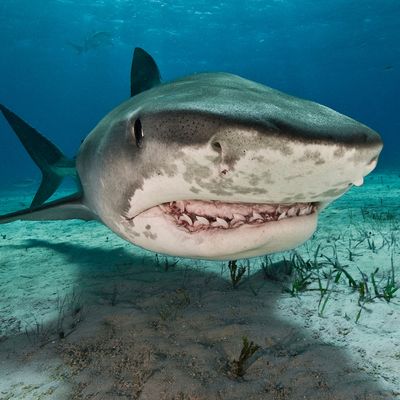
It’s easy, by default, to describe any disturbing story as the stuff of your worst nightmares — accidentally following an embarrassing Instagram account, losing 27 contacts in your eye , getting trapped in an elevator for a week . But the true story at the center of Shark Week’s first original movie is more horrifying than any Jaws movie. It’s official: Getting stranded and watching sharks slowly kill off my friends is now my worst nightmare.
The story, which inspired The Discovery Channel’s Capsized: Blood in the Water , dates back to 1982, when a billionaire hired a group of five friends to sail his yacht, named Trashman , from Maryland to Florida, Newsweek reports. Not long into the journey, the group suffered their first maritime nightmare when a violent storm caused the yacht to capsize, leaving the passengers stranded on a small dinghy without food or water. What would unfold over the next five days is horrifying. Per Popular Mechanics , the blood from one passenger’s sustained injuries drew the massive sharks to the boat, but she wasn’t the first to die. Instead, the first victim was a passenger who, delirious from subsisting on seawater and alcohol, jumped in the sea after thinking he had seen land. Except … there was no land. There were, however, tiger sharks.
“All of a sudden we just hear this shrill scream,” Deborah Scaling-Kiley, one of the survivors, said in the documentary I Shouldn’t Be Alive , per The Sun . “Blood-curdling. Then it was over, silence. There was no crying, nothing. There was no doubt what got him. The sharks got him.”
It didn’t stop there. Not long after, another man on the boat jumped into the water after notifying the others that he was going to buy beer and cigarettes. While the remaining passengers tried to stop him, they were ultimately unsuccessful, and they felt another shark devour him underneath the boat. Then, the passenger who had sustained injuries during the capsize died from blood poisoning. While one passenger, Brad Cavanaugh, considered eating her body, Newsweek reports , Cavanaugh and Scaling-Kiley decided to give their deceased friend a burial at sea. She, too, was eaten by sharks.
After five days of horrific conditions, the two survivors managed to flag down a Russian cargo ship, which saved them as they were on the brink of death. (While Scaling-Kiley died of unknown causes in 2014, Cavanaugh is reportedly still alive, making his living off an unimaginable career, given this experience: He’s a mariner.)
Pretty sure I, uh, won’t be watching this movie.
- horror stories
The Cut Shop
Most viewed stories.
- The Case for Marrying an Older Man
- What We Know About the Mommy Vlogger Accused of Child Abuse
- When Your Kid Is the Classroom Problem Child
- Everyone Named in the Latest Diddy Lawsuit
- How I Got Scammed Out of $50,000
- The Real Estate Developer Having Great Sex With Her Ex
Editor’s Picks

Most Popular
What is your email.
This email will be used to sign into all New York sites. By submitting your email, you agree to our Terms and Privacy Policy and to receive email correspondence from us.
Sign In To Continue Reading
Create your free account.
Password must be at least 8 characters and contain:
- Lower case letters (a-z)
- Upper case letters (A-Z)
- Numbers (0-9)
- Special Characters (!@#$%^&*)
As part of your account, you’ll receive occasional updates and offers from New York , which you can opt out of anytime.
The Horrifying Story Of The 1981 Trashman Yacht Sinking Just the Gist
This has been called one the worst shark attack stories of all time. After their yacht, ‘The Trashman’, sank in a major storm, five crew members were stranded in the middle of the ocean in a tiny inflatable dinghy. That number soon turned to four. Then three. Then two. Then... yeah - sharks were circling them, taking the crew one by one. But not before starvation and thirst caused them to mentally unravel and turn on each other (seriously - one crew member got so delirious they started acting like a possessed zombie).This one is a WILD fkn ride. Skip right to the story: approx 22:19We give you Just The Gist, but if you want more there’s this:‘I Shouldn’t Be Alive’ (Season 1, Episode 1) - available on Amazon Prime: News article about the sinking: www.newsweek.com/woman-fiends-eaten-sharks-capsized-atlantic-1453952%3famp=1Info on survivor Deborah Scaling Kiley: https://en.m.wikipedia.org/wiki/Deborah_Scaling_KileyDeborah’s book ‘Albatross: The True Story Of A Woman’s Survival At Sea: https://www.goodreads.com/book/show/273844.AlbatrossTranscript of Deborah’s interview with Larry King: http://transcripts.cnn.com/TRANSCRIPTS/0604/27/lkl.01.html Email us your suGISTtions! [email protected] See omnystudio.com/listener for privacy information.
- More Episodes
- 2024 315850 LiSTNR - Text, image, music and sound comprising this podcast are owned by or licensed to SCA. By accessing, communicating or using this podcast, you agree to be bound by the terms available at https://www.listnr.com/terms
Top Podcasts In Comedy
- Senior Living
- Wedding Experts
- Private Schools
- Home Design Experts
- Real Estate Agents
- Mortgage Professionals
- Find a Private School
- 50 Best Restaurants
- Be Well Boston
- Find a Dentist
- Find a Doctor
- Guides & Advice
- Best of Boston Weddings
- Find a Wedding Expert
- Real Weddings
- Bubbly Brunch Event
- Properties & News
- Find a Home Design Expert
- Find a Real Estate Agent
- Find a Mortgage Professional
- Real Estate
- Home Design
- Best of Boston Home
- Arts & Entertainment
- Boston magazine Events
- Latest Winners
- Best of Boston Soirée
- NEWSLETTERS
If you're a human and see this, please ignore it. If you're a scraper, please click the link below :-) Note that clicking the link below will block access to this site for 24 hours.
Shipwrecked: A Shocking Tale of Love, Loss, and Survival in the Deep Blue Sea

Illustration by Comrade
A drift in the middle of the ocean, no one can hear you scream.
It was a lesson Brad Cavanagh was learning by the second. He had been above deck on the Trashman , a sleek, 58-foot Alden sailing yacht with a pine-green hull and elegant teak trim, battling 100-mile-per-hour winds as sheets of rain fell from the turbulent black sky. The latest news report had mentioned nothing about bad weather, but two days into his voyage a tropical storm formed off of Cape Fear in the Carolinas, whipping up massive, violent waves out of nowhere. Soaked to the skin and too tired to stand, the North Shore native from Byfield sought refuge down below, where he braced himself by pressing his feet and back between the walls of a narrow hallway to keep from being knocked down as 30-foot-tall walls of water tossed the boat around the open seas.
Below deck with Cavanagh were four crewmates: Debbie Scaling, with blond hair and blue eyes, was an experienced sailor. As the first American woman to complete the Whitbread Round the World Race—during which she’d navigated some of the most difficult conditions on the planet—she was already well known in professional sailing circles. Mark Adams, a mid-twenties Englishman who had been Cavanagh’s occasional racing partner; the boat’s captain, John Lippoth; and Lippoth’s girlfriend, Meg Mooney, rounded out the crew, who were moving a Texas tycoon’s yacht from Maine to Florida for the winter season.
As the storm continued, Cavanagh grew increasingly angry. At 21 years old and less experienced than most of the others, he felt as though no one had a plan for how they were going to get out of this mess alive. He knew their situation was dire. The motor was dead for the third time on the trip, and they had already cut off the wind-damaged mainsail. That meant nature was in control. They could only ride it out and hope to survive long enough for the Coast Guard to rescue them. Crewmates had been in contact with authorities nearly every hour since the early morning, and a rescue boat was supposedly on its way. It’s just a matter of time , Cavanagh told himself again and again, just a matter of time.
After a while, the storm settled into a predictable pattern: The boat would ride up a wave, tilt slightly to port-side and then ride down the wave, and right itself for a moment of stillness and quiet, sheltered from the wind in the valley between mountains of water. Cavanagh began to relax, but then the boat rose over another wave, tilted hard, and never righted itself. Watching the dark waters of the Atlantic approach with terrifying speed through the window in front of him, Cavanagh braced for impact. An instant later, water shattered the window and began rushing into the boat. He jumped up from the floor with a single thought: He had to rouse Scaling from her bunkroom. He had to get everyone off the ship. The Trashman was going down.
Three days earlier, the weather had been perfect: The sun sparkled on the water and warmed everything its rays touched, despite bursts of cool breezes. Cavanagh was walking the docks of Annapolis Harbor alongside Adams, both of them hunting for work. A job Adams had previously secured for them aboard a boat had fallen through, and all they had to show for it was a measly $50 each. As they made their way along the water, Cavanagh spotted an attractive woman standing by a bank of pay phones. He looked at her and she stared back at him, a sandy-haired, 6-foot-3-inch former prep school hockey player draped in a letterman jacket. It wasn’t until she called out his name that he realized who she was: Debbie Scaling.
Cavanagh came of age in a boating family. He’d survived his first hurricane at sea in utero, and grew up on 4,300 feet of riverfront property in Byfield, where his father, a trained reconnaissance photographer named Paul, taught him and his siblings how to sail from an early age. From the outside, the elite schools, the sailboat, the new car every five years, the grand house, and the self-made patriarch gave the impression that the Cavanaghs were living the suburban American dream. Inside the home, though, it was a horror show. Always drinking, Cavanagh’s father emotionally abused, insulted, and belittled his wife and children, Cavanagh recalls. Whenever Cavanagh heard the clinking of ice cubes in his father’s glass, his stress meter spiked.
Despite that—or perhaps because of it—all Cavanagh ever wanted was his father’s approval. Sailing, he thought, would earn his respect. Cavanagh’s sister, Sarah, after all, had been a star sailor, and at family dinners his hard-drinking—and hard-to-please—father talked about her with pride and adulation. In fact, it was Cavanagh’s sister who had first met Scaling when they raced across the Atlantic together a year earlier. She had recently introduced Scaling to Cavanagh and her family, and now, standing at that pay phone in Annapolis, Scaling could hardly believe her eyes. At that very moment, she had just called Cavanagh’s household in hopes of convincing Sarah to join the crew of the Trashman , and here was Sarah’s younger brother standing right in front of her.
Scaling was desperately looking for help on the yacht. Already things had been going poorly: The boat’s captain, Lippoth, who was a heavy drinker, was passed out below deck when she first showed up at the Southwest Harbor dock in Maine to report for work. Soon after they set sail, they picked up the captain’s girlfriend, Mooney, because she wanted to come along for the trip. From Maine to Maryland, Lippoth rarely eased the sails and relied on the inboard motor, which consistently sputtered and needed repair. They’d struggled to pick up additional hands as they traveled south, and Scaling knew they needed more-qualified help for the difficult sail along the coast of the Carolinas, exposed at sea to high winds and waves. Scaling didn’t share any of this with Cavanagh or Adams when Lippoth offered them a job, though. Happy to have work, the pair accepted and climbed aboard.
Perhaps Cavanagh should have known something was wrong with the yacht when the captain mentioned that the engine kept burning out.
“Mayday! Mayday!” A crew member was shouting into the radio, trying to summon the Coast Guard as the yacht began taking on water. Cavanagh had just burst into Scaling’s cabin, while Adams roused Lippoth and Mooney. And now they huddled together at the bottom of a flight of stairs watching the salty seawater rise toward the ceiling. Lippoth tried to activate the radio beacon that would have given someone, anyone, their latitudinal and longitudinal coordinates, but the water rushing in carried it away before he could reach it.
The crew started making their way up toward the deck to abandon ship. Cavanagh spotted the 11-and-a-half-foot, red-and-black Zodiac Mark II tied to a cleat near the cockpit. The outboard motor sat next to it on the mount, but the yacht was sinking too fast to grab it. As he fumbled with the lines of the Zodiac, one broke, recoiled, and ripped his shirt open. Then he lost his grip on the dinghy, and it floated off. Fortunately, it didn’t go far. Adams wasn’t so lucky. A strong gust of wind ripped the life raft out of his hands, and the sinking yacht started to take the raft and its emergency food, water rations, and first-aid kit down with it. By the time Cavanagh swam off the Trashman , it was nearly submerged.
As Cavanagh made his way toward the dinghy, he kicked off his boots, which belonged to his father. For a moment, all he could think was how angry his dad would be at him for losing them. When he got to the Zodiac, he yelled to the others to grab ahold of the raft before the yacht sucked them down with it. The crew made it onto the dinghy with nothing but the clothing on their backs. As they turned around, the last visible piece of the Trashman disappeared beneath the ocean.
Terrified, the five crew members spent the next four hours in the water, being thrashed about by the waves while holding on to the lines along the sides of the Zodiac, which they had flipped upside down to prevent it from blowing away. During the calmer moments, they ducked underneath for protection from the strong winds, with only their heads occupying a pocket of air underneath the raft. There wasn’t much space to maneuver, but still Cavanagh felt the need to move toward one end of the boat to get some distance from his crewmates while he processed his white-hot anger at Lippoth and Adams. Over the past two days, Adams had often been too drunk to do his job, and Lippoth never did anything about it, leaving him and Scaling to pick up the slack. Cavanagh had spent his childhood on a boat with a drunken father, and now, once again, he’d somehow managed to team up with an alcoholic sailing partner and a captain willing to look the other way.
Perhaps he should have known something was wrong with the yacht when the captain mentioned that the engine kept burning out. Maybe he should have been concerned that Lippoth didn’t even have enough money for supplies. But there was nothing he could do about it now, adrift in the Atlantic and crammed under an inflated dinghy trying to stay alive.
As nighttime approached and the temperature dropped, Cavanagh devised a plan for the crew to seek shelter on the underside of the Zodiac yet remain out of the water. First, he grabbed a wire on the raft and ran it from side to side. He lay his head on the bow of the boat and rested his lower body on the wire. Then the others climbed on top of him, any way they could, to stay under the dinghy’s floor but just out of the water. When the oxygen underneath the Zodiac ran out, they’d exit, lift the boat just long enough to allow new air into the pocket, and go back under again.
Sleep-deprived and dehydrated, Cavanagh’s mind wandered home to Byfield and the endless summer afternoons of his childhood spent under his family’s slimy dock, playing hide-and-seek with friends. Cavanagh had spent a lot of his life hiding from his father and his alcohol-fueled rages. If there was a silver lining to the abuse and the fear he grew up with, it was that he learned how to survive under pressure and to avoid the one fatal strain of seasickness: panic.
The next morning, that skill was suddenly in high demand as Lippoth unexpectedly swam out from under the Zodiac to find fresh air. He said he felt like he was having a heart attack and refused to go back under. The storm had calmed, but a cool autumn breeze was sucking the heat from their wet bodies, and Cavanagh wanted the crew to stay under the boat to keep warm. Disagreeing with him, Cavanagh’s crewmates decided to flip the boat right-side up and climb onboard. It momentarily saved their lives: They soon noticed three tiger sharks circling them.
Mooney had accidentally gotten caught on a coil of lines and wires while abandoning the yacht, leaving a bloody gash behind her knee. Everyone else had their cuts and scrapes, too, and the sharks had followed the scent. The largest shark in the group began banging against the boat, then swam under the craft and picked it up out of the water with its body before letting it drop back down. The crew grabbed onto the sides of the Zodiac while Cavanagh and Scaling tried to fashion a makeshift anchor out of a piece of plywood attached to the raft with the metal wire, hoping that it would help steady the boat. No sooner had they dropped the wood into the water than a shark bit it and began dragging the boat at full speed like some twisted version of a joy ride. When the shark finally spit the makeshift anchor out, Cavanagh reeled it in and Adams, in a rage, grabbed it and tried to smash the shark’s head with it. Cavanagh begged his partner to calm down. “The shark’s reaction to that might be bad,” he said, “so just cool it.”
Cavanagh believed that if they could all just stay calm enough to keep the boat upright, they could make it out alive. “The Coast Guard knows we’re here,” Cavanagh told the others, who had heard a plane roaring overhead before the Trashman sank. It was presumably sent to locate any survivors so a rescue ship could bring them back to shore. Unknown at the time was that a boat had been on the way to rescue the group, when for some reason—a miscommunication of sorts—the search was either forgotten or called off. No one was coming for them.

Brad Cavanagh is still haunted by his fight for survival. / Portrait by Matt Kalinowski
Fighting to survive, Cavanagh knew he needed to keep his mind and body busy. With blistered lips and cracked hands, he pulled seaweed onboard to use as a blanket, and he flipped the boat to clean out the urine and fetid water that had accumulated in it. First, he scanned the water to make sure the sharks had left. Then, with Adams’s help, he leaned back and tugged on the wire to flip the boat, rinsed it out, and flipped it back over again so everyone could climb back in. He had a job and a purpose, and it kept him sane.
The others struggled. Adams and Lippoth were severely dehydrated. (Adams from all the scotch he drank and Lippoth from the cigarettes he chain-smoked before the Trashman went down.) Meanwhile, Mooney’s cut was infected and filled with pus; she was getting sicker and weaker. As they lay together in a small pool of water in the bottom of the boat, they all developed body sores, likely from staph infections. Cavanagh’s skin became so tender that even brushing up against another person sent a current of pain through his body. After three days without food and water and using their energy to hold on to the Zodiac during the storm, they were all completely spent.
Realizing that the Coast Guard may not be coming after all, some crew members began to believe their only hope for survival was to eventually wash up on shore. What they weren’t aware of was that a current was pulling them even farther out to sea.
That night, Cavanagh dreamt of home. He was on a boat, sailing, and talking to the men on a fishing vessel riding along next to him as he made his way from Newburyport to Buzzards Bay. It was the route his family took when moving their boat every summer.
The day after he had that dream, the situation descended into a nightmare: Lippoth and Adams began drinking seawater. It slaked their thirst momentarily, but Cavanagh knew it would only be a matter of time before it sent them deeper into madness. Soon enough, the delusions began. First, Lippoth started reaching around the bottom of the boat looking for supplies that didn’t exist. “We bought cigarettes. Where are they?” Lippoth asked. Then Lippoth began trying to convince Mooney that they were going to take a plane to Maine, where his mother worked at a hospital. “We’re going to Portland,” he told her. “I’m going to get the car. I want you guys to pick up the boat and I’ll come back out and get you,” Lippoth said before sliding over the edge of the Zodiac and into the water.
“Brad, you’ve got to get John,” Scaling said to Cavanagh in a panic. But Cavanagh was so weak, he could barely muster the energy to coax Lippoth back onboard. “If you go away and die, then I might die, too. I don’t want to die,” Cavanagh pleaded.
It was too late. The wind pulled the Zodiac away from him. The captain soon drifted out of sight. Across the empty expanse of the ocean, Cavanagh could hear Lippoth’s last howls as the sharks attacked.

An old newspaper clipping of Cavanagh and Scaling, not long before their rescue. / Courtesy photo
Now there were four. Cavanagh, though, noticed Adams was quickly careening into madness, hitting on Mooney, and proposing that sex would cheer her up. Rebuffed, he decided to take his party elsewhere. “Great,” Cavanagh recalls him saying, “if we’re not going to have sex, I’m going back to 7-Eleven to get some beers and cigarettes.”
“You’re not going,” Cavanagh said. “We’re out in the middle of the ocean.”
“I know, I know,” he told Cavanagh. “I’m just going to hang over the side and stretch out a little bit. I’ll get back in the boat.”
Holding onto the side of the raft, Adams slipped into the water. Cavanagh looked away for a moment to say something to Scaling, and when he turned back, Adams was gone. Soon after, the boat began to spin and the water around them started to churn wildly. Cavanagh knew the sharks had gotten Adams, but he was so focused on surviving that it hardly registered that his racing buddy was gone forever.
The three remaining castaways spent the rest of the evening being knocked around as the sharks bumped and prodded the boat. They found something they like , Cavanagh said to himself. And now they want more.
Mooney lay there shivering violently from the cold. In the black of night, she lurched at Cavanagh, scratching at him and screaming. Then she began speaking in tongues. In the morning, Cavanagh woke first and found her lying on her back, her arms outstretched, staring into the sky. “She’s dead,” Cavanagh said when Scaling woke up. “She’s been dead for hours.”
Then a terrifying thought came to his mind: Maybe we could eat her . He was so hungry, so desperately famished, but her body was covered in sores and oozing pus.
Cavanagh and Scaling removed Mooney’s shirt so they would have another layer to keep warm, and her jewelry so they could return it to her family. They still hoped they would have that chance. Then they pushed her naked body off the raft. She floated like a jellyfish, with her arms and legs straight down, away and over the waves. Neither of them were watching when the sharks came for her, too.
After Mooney died, Scaling was troubled that she was lying in pus-infected water and begged Cavanagh to flip the boat over and clean it out. Weak and unsteady, he agreed to try. Standing on the edge of the Zodiac, he tugged the wire and tried to flip it, but he didn’t have the strength to do it alone. Then he gave another tug, lost his balance, and tumbled backward into the water. He tried to get back in the boat but couldn’t. Panic seized him. Every person who had come off that boat had been eaten by sharks. He needed to get back in fast, and he needed Scaling’s help.
Cavanagh begged her to help him up, but she only sat there sobbing inconsolably on the other side of the raft. With his last bit of strength, Cavanagh willed himself over the side on his own. He sat in the boat, winded and seething with anger. The entire time, from when they were on the Trashman with a drunken crewmate, during the storm, and throughout their harrowing journey on the Zodiac, Scaling and Cavanagh had upheld a pact to look out for each other, to protect each other from the sharks, the madness, the others. How could she have left me there in the water? he thought. How could she have let me down? They were supposed to be a team. Now on their fifth day without food or water, he couldn’t even look at her. There were two of them left, but he felt alone.
They sat in a cold, uncomfortable silence until he had something important to say. “Deb, look,” Cavanagh shouted. A large vessel was approaching them. They’d spotted a couple of ships before in the distance, but none were close enough for them to be seen. As it moved toward them, he could see a man on the deck waving. Shortly after, crew members threw lines with large glass buoys on the end of them. But they all landed short, splashing in the water too far away. Undeterred, the men on deck pulled the rescue buoys back and tried again.
Cavanagh, for his part, couldn’t move. “I’m not going anywhere,” he told Scaling. It felt as if every muscle had gone limp. He had nothing left after spending days balancing the boat, flipping it, pulling it, and watching his crewmates die. The ship made another turn. Closer. The men aboard threw the lines again. Scaling jumped into the water and started swimming.
Seeing his crewmate in the water was all the motivation Cavanagh needed. Fuck it , he told himself. Here I go . He rolled overboard and managed to grab a line, letting the crew reel his weakened body in and hoist him up onto the deck along with Scaling. Aboard the ship, Cavanagh saw women wearing calico dresses with aprons and steel-toed work boots waiting for them. They were speaking Russian. At the height of the Cold War, the U.S. Coast Guard never came to save them, but ice traders on a Soviet vessel did.
The crew gave Cavanagh and Scaling dry clothes and medical attention, along with warm tea kettles filled with coffee, sugar, and vodka. That night, as the Coast Guard finally arrived and spirited the two survivors to a hospital, the temperature dropped down into the 30s. Cavanagh and Scaling wouldn’t have made it through another night at sea.
As Cavanagh was recuperating in the hospital, his mother flew down to be by his side. Seeing her appear at his bedside felt like the happiest moment of his life. His father, however, never came; he was on a sailing trip.
Cavanagh soon returned home to Massachusetts and once again felt the need to keep busy: He immediately began taking odd jobs in hopes of earning enough cash to begin traveling to sailboat races again. Processing what he’d endured—five days without food or water and man-eating sharks—was next to impossible. The Southern Ocean Racing Conference season in Florida started in January, and he was determined to be there, but not necessarily to race. He needed to talk to the only other person who had made it off that Zodiac alive. He had something important he needed to tell Scaling.
A few months later, Cavanagh boarded a flight to Fort Lauderdale for the event. With no place to stay, he slept in an empty boat parked in a field. Walking around the next day, he caught a glimpse of the latest issue of Sail magazine and stopped dead in his tracks: Staring back at him was a photo of him and Adams, plastered across the cover. A photographer had snapped a shot of the two racing buddies just before they’d joined the Trashman . It was like seeing a ghost.
Cavanagh paced the docks searching for Scaling—then there she stood, looking as beautiful as ever. His whole body was pumping with adrenaline at the sight of his former crewmate. He needed to tell her he was in love with her. They had shared something that no one else could ever understand. The bond he felt was far deeper than any he’d ever known.
He moved toward her to speak, but the mere sight of Cavanagh made Scaling recoil, reminding her of the horrors that she’d suffered at sea while in the Zodiac. “I’m sorry, but I cannot be around you,” he recalls her saying. “I don’t want you to have anything to do with me. Please leave me alone.” Dejected and hurt, Cavanagh retreated. Then he did what he’d always done: He walked the docks, banging on boats until he found someone willing to hire him.
As the years rolled by like waves, Scaling became a socialite and motivational speaker, talking publicly and often about her fight to survive. She appeared on Larry King Live and wrote a memoir. She and Cavanagh both continued to sail and ran in similar circles, seeing each other often, and both trying desperately to hide their pain when they did.
Scaling eventually settled down in Medfield, where she raised a family and spent summers on the Cape. In 2009, her son, also an avid sailor, drowned in an accident. Nearly three years to the day later, she passed away in San Miguel de Allende, Mexico, at 54. Cavanagh was walking out of a marina in Newport, Rhode Island, when someone broke the news to him. He was profoundly disappointed. Disappointed with life itself. He had loved her. There was no information in her obituary about her cause of death, but he recalls there were whispers among family members of suicide. Cavanagh believed no one could have saved her: She was still tortured by those days lost at sea. He was now the lone survivor of the Trashman tragedy.
Several years later, Scaling’s daughter gave Cavanagh a frame. Inside it was a neatly coiled metal wire—the same one Cavanagh had rigged up to suspend their shivering bodies under the Zodiac and flip the boat to keep it clean. It was what had kept them both alive. Unbeknownst to him, Scaling had retrieved it after the dinghy was found still floating in the ocean. She framed it and hung it on her wall, keeping it close all those years.
Cavanagh remains hell-bent on learning why the Coast Guard never showed up in the aftermath of that fateful storm.
On a cold winter day, I drove to Cavanagh’s home in Bourne, where he lives with his wife, a schoolteacher, and his two children. He still had wide shoulders and a strong face, now layered with deep wrinkles, and greeted me with a handshake. His enormous hands engulfed mine.
The wind howled outside and a fire burned in the living room’s gas stove as he sat down on his couch to talk—for the very first time at length—about his life since being rescued. Above his head was the rendering of a floating school he once wanted to build for the Massachusetts Maritime Academy. It had classrooms, living quarters for the students, and bathrooms, but it never was built. It became one of Cavanagh’s many grand ideas over the years, all of which had to do with sailing, that he never saw to fruition. He wants to write a book, too, like Scaling, but he hasn’t been able to get started.
Sailing is the one thing that has remained constant in Cavanagh’s life. He said the ocean continued to give him freedom, even as he remained chained to his past, to the shipwreck that almost killed him, and to the abusive father who failed him.
While we sat there, listening to the wind, Cavanagh pulled out his father’s sailing logbook. In it were the dates and locations of his around-the-world trip. The day his father set sail in 1982, Cavanagh thought he was finally safe. His mother had just filed for divorce and Cavanagh no longer felt he had to stick around to protect her, so he left home to start his life. His father had invited him to join him on his trip, but there was no way Cavanagh was doing that. He wound up on the Trashman instead.
Cavanagh paused to read his father’s entries from the days that Cavanagh was lost at sea. At the time, his father had been docked and drunk in Bermuda, which lies off the coast of the Carolinas, just beyond where the yacht went down. Then he set sail again into the weakened tail end of the same storm that had sunk the Trashman , not knowing that his son had been floating in that same ocean, fighting for his life and waiting for someone to save him.
Cavanagh remains hell-bent on learning why the Coast Guard never showed up in the aftermath of that fateful storm. He has documents and photos from the official case file after the sinking of the Trashman , but they give few, if any, clues. He has spent decades trying to figure out what happened, and now that he’s the only crew member alive, he’s even more determined to find the truth. He wants to know how rescuers forgot about him and his crewmates, and why. Haunted by his memories, he has driven up and down the East Coast, stopping at bases and looking for anyone to speak to him about the incident. He is still adrift, nearly 40 years later, still searching for answers.
You are using an outdated browser. Please upgrade your browser to improve your experience and security.

ISBN: 0395655730
ISBN13: 9780395655733

Select Format
Select condition, recommended.
Format: Hardcover
Condition: Acceptable *
*Best Available: ( ex-library )
Book Overview
One late summer's day, the yacht Trashman set sail from Annapolis to Florida. On board were five young people: John, the captain; Meg, Mark, Brad, and Debbie Scaling. When the boat sailed into a gale,... This description may be from another edition of this product.
Related Subjects
Customer Reviews
A tremendous piece of work, interesting sea survival story written by a woman, fascinating and very scary, every page is a cliff-hangar; a sailing trip gone bad., popular categories.
- Teen and Young Adult
- Literature & Fiction
- Mystery & Thriller
- Sci-fi & Fantasy
- Large Print Books
- Rare & Collectible Books
- ShareBookLove
- Educator Benefits
- Librarian Benefits
- e-Gift Cards
- View Mobile Site
- Shopping Cart
- Order History
Partnerships
- Library Program
- Help & Support
- Shipping Costs
- Return Policy
- Website Suggestions
- Our Purpose
- Social Responsibility
- Testimonials
- Fuels & Lubes
- Legal / Regulations
- Maritime Snippets
- Market Watch
- Safety & Security
- Statistics & Countries
- Regulatory Updates
- Environment News
- Infographic
- Interesting News
- Case Studies
- Expert Blogs
- Panel of Gurus
- Panel of Experts
- Maritime Links

Trashman Shipwreck Incident – A Tale Of Survival
- Forty years ago, a group of five cremates found themselves stranded in the middle of the ocean after their boat capsized.
- The incident—known as the Trashman Shipwreck—has been the subject of several documentaries and films.
A recent news article published in the News Week talks about one interesting news on the title “We Just Hear This Shrill Scream. Then It Was Over. The Sharks Got Him”.
A tale of survival
In 2019, the story was told in the Discovery Channel film Capsized: Blood in the Water starring Josh Duhamel and the survivors took part in the 2005 documentary I Shouldn’t Be Alive , in which they described their horrifying ordeal.
In October 1982, a yacht, the Trashman was sailing along the eastern seaboard to Florida.
Aboard the boat were experienced sailors Brad Cavanagh and Deborah Scaling Kiley, the boat’s captain, John Lippoth, his girlfriend Meg Mooney, and Mark Adams—a friend of Cavanagh’s. Despite the substantial amount of sailing experience of those onboard, nothing could have prepared them for the tropical storm that appeared out of nowhere just two days into the voyage.
The boat had been making difficult progress off North Carolina when the gales hit, rolling off the coast of Cape Fear, Boston Magazine reported.
The yacht was in poor condition. Its motor spluttered and broke down regularly, and its sails were wind damaged. As the storm raged the Trashman began to sink and eventually capsized and its crew alerted the coast guard to come and rescue them.
Unknown to them, a boat had been on its way to rescue the group, when for some unknown reason the search was either forgotten or called off.
The five people on board yacht were forced to abandon ship and balance on a tiny life raft, floating in the middle of the ocean without food or water—but that was not all. North Carolina is home to an abundance of marine life, including one of the biggest and most aggressive species of shark: the tiger shark. It was not long before three tiger sharks began to circle the group.
Tiger sharks are one of the “big three” shark species responsible for most shark attacks on humans, alongside the bull shark and the great white.
Shark attacks on humans are rare. In 2021, sharks killed 11 people, the International Shark Attack File reported. They usually occur when humans are swimming in areas with a large abundance of prey.
The five crew members had spent four hours in the water, holding on to the lines along the sides of the life raft, which they had flipped upside down to prevent it from blowing away.
Having righted the raft, the group had nowhere to go and some were bleeding—potentially having alerted sharks up to a quarter of a mile away to their presence.
James Sulikowski, a shark expert and marine biologist at Arizona State University, told Newsweek that the blood may have attracted the sharks, but it was more likely to have been the movement of the water.
“Tiger sharks are one of the three most aggressive shark species out there. And they typically feed at the surface. The thing with tiger sharks is that they are a large roaming predator. So any type of potential food item that’s out there, they’re going to investigate. And you’ve got individuals in the water who are trying to stay afloat. They’re doing all sorts of things that are creating sound waves that will attract the sharks.”
One of the sharks began banging its head against the raft, a retelling of the story in Boston Magazine in August, 2021 said. It swam underneath the raft and began lifting it up and down. Cavanagh and Scaling Kiley tried to use a piece of plywood attached to wire as an anchor, hoping it would help steady the buffeted raft. But as they threw it into the water, the shark took hold of it and began dragging the boat at full speed.
The sharks eventually left them alone but three days later they returned. At this point the crew were severely dehydrated and becoming delirious.
Convinced he could see land that didn’t exist, Lippoth leaped into the water.
There was silence for a second before a terrifying sound pierced the air.
“All of a sudden we just hear this shrill scream,” Scaling Kiley said in I Shouldn’t be Alive . “Blood-curdling. Then it was over, silence. There was no crying, nothing. There was no doubt what got him. The sharks got him.”
The next to become completely delirious was Adams. In a state of delusion, he told the rest of the crew that he was going to buy cigarettes. Scaling Kiley and Cavanagh attempted to stop him but before they knew it he had jumped in the water. Sharks fed on Adams underneath the raft.
“It was by far the most horrifying moment of my entire life,” Scaling Kiley said in I Shouldn’t Be Alive .
While Scaling Kiley and Cavanagh were weak, Mooney’s situation was worse and she began speaking in tongues and shivering violently. Her wounds had festered and she began to suffer hallucinations. The next morning, they both woke to find her dead.
It occurred to Cavanagh to eat Mooney, as intense hunger took hold of the two survivors but they knew it would be counter-intuitive as she was so sick when she died. They gave Mooney a makeshift funeral and pushed her body into the ocean.
“We decided to go back to sleep so when the sharks attacked we wouldn’t have to see it,” said Scaling Kiley.
Five days after the ordeal began, Cavanagh and Scaling Kiley were rescued by a Russian cargo ship.
What caused the sharks to attack?
“It’s really rare that people would be stranded out in the middle of the ocean, kicking and trying to stay alive. It’s wrong place, wrong time,” Sulikowski said. “These things happen when we’re in the water. Sharks live in the water and that’s their environment, they are looking for food there. If we go to an area which has a lot of prey items, there is a good chance that we as a human being are going to be mistaken for that.”
Sulikowski said human blood is not generally appealing to sharks. But mistakes can happen.
Stephen M. Kajiura professor of Biological Sciences at Florida Atlantic University told Newsweek : “Tiger sharks can be very large and quite capable of consuming large prey, including adult humans.
“The Trashman story is a special case. The majority of shark bites take place along the beach where bathers get bitten by sharks. However, most of those are a case of mistaken identity where the shark is unable to visually resolve that it is a human and not a little bait fish and thus the person’s hand or foot gets bitten. For larger sharks, like white sharks, the shark could mistake the person for a prey item like a seal.
“In the case of the Trashman wreck this took place because the survivors on the life raft were leaking bodily fluids into the water which provided a strong odor cue to attract the sharks to the area and arouse them to search for food. Once the feeding motivated sharks were cruising around the boat, when a person went splashing into the water, they became an easy target for the sharks .”
Kajiura also said the life raft itself may have attracted fish, which then attracted the sharks.
“The life raft floating in the water could act as a fish aggregating device,” he said. “Fish like structure and there is very little structure available in the open ocean. If you had a life raft floating in an otherwise featureless environment, fish could be attracted to it and stick around in the shadow of the raft.”
“As a result, sharks might have already been in the proximity of the raft and the odors from the survivors might have been enough to arouse them to bite when they were presented with a potential prey item like a struggling human,” Kajiura said.
Scaling Kiley died in 2014 at the age of 54. She had become a motivational speaker, talking of her ordeal and how she survived. But she could not be around Cavanagh. He told Boston Magazine Scaling Kiley said he reminded her of what had happened.
“[She said] I’m sorry, but I cannot be around you. I don’t want you to have anything to do with me. Please leave me alone.”
Cavanagh is now living in Bourne, Massachusetts with his wife and two children. He told Boston Magazine he is determined to find out why the coast guard never showed to save him and his crew mates.
The original case file of the incident provides little insight into why this happened, the magazine reported.
Cavanagh has searched the East Coast for answers, looking for anyone who may know why he and his crewmates were left adrift for days with no help.
But it remains a mystery to this day.
Did you subscribe to our newsletter?
It’s free! Click here to subscribe!
Source: News Week

Lesson Learned

Lessons Learned: Heavy Equipment Fall During Manual Handling

Lesson Learned: Vessel Grounding Lessons From An OOW Falling Asleep

Lessons Learned: Person Pulled To Deck By Fall Arrest Harness

Lessons Learned: Improper Chemical Handling Causes Eye Burn

Lessons Learned: Engine-Room Fire Onboard Chemical Tanker
Latest articles.

NYK, JMU To Evaluate Ship Performance In Actual Seas

ClassNK Grants Innovation Endorsements For MOL Solutions

MOL Announces Restructuring Measures

Analysis Of Cancelled Sailings And Impact Of Baltimore Bridge Collapse

Infineon Technologies And HD Korea Shipbuilding Partner to Electrify Marine Engines
Privacy overview.
wrecksite.eu is not available in Russia, Belarus and all countries supporting or ignoring the war in Ukraine: Armenia, Kazakhstan, Kyrgyzstan, Tajikistan, Turkmenistan, Uzbekistan, China, Syria, Iran, India, Serbia, North Korea, Bolivia, Nicaragua, Burkina-Faso, Venezuela, Cuba, Eritrea, Bangladesh and Hungary.
Due to the Putin-initiated war in Ukraine, we have decided to take part in the sanctions and have disabled our services for visitors from these countries.
Help end the war and support Ukraine →
Inform yourself about what is actually going on in Ukraine →

IMAGES
VIDEO
COMMENTS
Deborah Scaling Kiley (January 21, 1958 - August 13, 2012) was an American sailor, author, motivational speaker, and businesswoman. She was the first American woman to complete the Whitbread Round the World Race.In 1982, she famously survived a boating accident off the coast of North Carolina, which became the basis for her book Albatross and subject of multiple other books and films which ...
Miraculously, Deborah survived the 1982 boat crash that claimed three lives. She passed away 20 years later on August 13, 2012, at the age of 54. Per the Star-Telegram, Deborah died in San Miguel de Allende, Mexico, where she had recently moved. An obituary archived at Legacy.com did not list Deborah's cause of death.
But two days into the journey, their 18-metre yacht Trashman capsized during a violent storm, throwing 24-year-old sailor Deborah Scaling-Kiley and her friends into the ocean. Josh Duhamel in ...
The capsize of the boat is also hurried in the film compared to the actual event. The movie begins with the yacht, Trashman, leaving Annapolis, Maryland, as it sets sail for Florida. The true journey began in Portland, Maine, before it made a stop in Annapolis. On the way to Florida, the Trashman hit rough seas during a long storm.
Capsized: Blood in the Water is an American biographical natural horror-survival film, based on a true story from 1982. Roel Reiné directed the film, from a script written by Stephen David, with the story co-written by David, Tim K. Kelly and Jonathan Soule. The film plot centers around a small boat crew aboard a private yacht who are stranded in shark infested waters, following a storm that ...
Before taking on the job of crewing the luxury yacht, the Trashman, from Maine to Toronto, she had done it all. ... The fateful trip started in October 1982, when the 58-foot yacht briefly stopped ...
One late summer's day, the yacht Trashman set sail from Annapolis to Florida. On board were five young people: John, the captain; Meg, Mark, Brad, and Debbie Scaling. When the boat sailed into a gale, the eighty-knot winds shredded the sails. Forty-foot seas crashed through the cabin windows, and Trashman sank, leaving the crew adrift in a ...
In 1982, a billionaire hired the group to sail his 58-foot yacht Trashman down the East Coast to Fort Lauderdale, Florida. Somewhere near North Carolina, a raging storm destroyed the vessel ...
The yacht called the 'Trashman' was headed to Fort Lauderdale, Fla. from Portland, Maine to reunite with its owner, according to the United Press International that reported the incident in 1982.
The movie is based on a tragedy that occurred in 1982. According to National Post, it all started when a boat owner hired a crew to bring his yacht, 'Trashman' to his home in Fort Lauderdale, Fla. from Portland, Maine.However, it capsized during a storm and sunk off the coast of North Carolina by Morehead City.
In 1982, a captain, his girlfriend, and three sailors were sailing a yacht (named the Trashman) from Maryland to Florida when a storm caught them unaware. The yacht sank, leaving the crew to fend ...
The story, which inspired The Discovery Channel's Capsized: Blood in the Water, dates back to 1982, when a billionaire hired a group of five friends to sail his yacht, named Trashman, from Maryland to Florida, Newsweek reports. Not long into the journey, the group suffered their first maritime nightmare when a violent storm caused the yacht ...
Comedy. This has been called one the worst shark attack stories of all time. After their yacht, 'The Trashman', sank in a major storm, five crew members were stranded in the middle of the ocean in a tiny inflatable dinghy. That number soon turned to four. Then three. Then two. Then... yeah - sharks were circling them, taking the crew one by ...
He had been above deck on the Trashman, a sleek, 58-foot Alden sailing yacht with a pine-green hull and elegant teak trim, battling 100-mile-per-hour winds as sheets of rain fell from the ...
ALBATROSS is a gripping story of survival and agonizing death at sea--the sinking with the loss of three lives of the yacht TRASHMAN off the Carolina coast. The author pulls no punches and tells a tale of human suffering, weakness, and malice that left this reader shaken by its bluntness, realism, and intensity.The story is told in a direct and ...
Kiley's new book, ``Albatross,' is the gripping story of what was supposed to be a routine cruise from Maine to Florida to deliver the Trashman to its garbage magnate owner. It's a story of ...
In 2019, the story was told in the Discovery Channel film Capsized: Blood in the Water starring Josh Duhamel and the survivors took part in the 2005 documentary I Shouldn't Be Alive, in which they described their horrifying ordeal. In October 1982, a yacht, the Trashman was sailing along the eastern seaboard to Florida.
The 58 foot yacht TRASHMAN (ex TANTRIC) in harbor before her final voyage. TRASHMAN sank in a gale during an October 1982 delivery voyage, leaving only two survivors from a five person crew. ... Both survivors contributed to book and film projects commemorating the disaster:-Capsized: Blood in the Water (2019), starring Tyler Blackburn
Trashman: Excerpt from No Victims Only Survivors - Ten Lessons for Survival. The October storm of 1982 That last night in Annapolis, it was as if everyone knew the voyage was doomed. It was thick in the air. We drank the way people drank in my childhood - for oblivion- and Mark the most of all. We found him in a restaurant with a petite and ...
This has been called one the worst shark attack stories of all time. After their yacht, 'The Trashman', sank in a major storm, five crew members were stranded in the middle of the ocean in a tiny inflatable dinghy. That number soon turned to four. Then three. Then two. Then... yeah - sharks were circling them, taking the crew one by one.But ...
It's about the sinking of the Trashman yacht in October 1982. The 58 ft sailing yacht was doing a return trip from Maine to Florida and was sailing through Hurricane Alley when a storm with 70 mph winds and 30 ft high waves began to hit. The rough conditions caused the skipper's girlfriend, Meg, to get badly injured, with a cut on her thigh ...